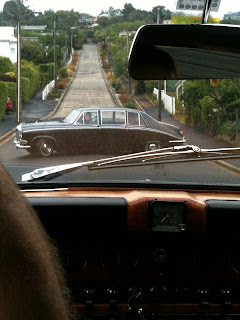Once I have collected all of my bees from my data collection, I need to count the pollen grains on each bee. Even though the bee looks clean, they can carry anywhere from 50,000 to over 1,000,000 pollen grains on them. Obviously this is too much to count EVERY grain of pollen on 600 bees so I need a process to make it easier. I will attempt to explain it below.
At the bottom of this blog is a problem for you to work out!
My first step is to take the bee out of the Freezer and defrost her (The workers are all females)
I then have to ensure the solution (Stain) that the bee is sitting in is well mixed. this machine is called a Vortex. It mixes the solution
Here is a bee in an Ependorph vial being mixed on the Vortex.
This tool is used to precisely measure out liquids. I have set it to extract 0.01ml of stain containing pollen from the bee.
I am placing it onto a special slide called a
hemocytometer slide.

The hemocytometer was invented by
Louis-Charles Malassez and consists of a thick
glass microscope slide with a rectangular indentation that creates a chamber. This chamber is engraved with a laser-etched
grid
of perpendicular lines. The device is carefully crafted so that the
area bounded by the lines is known, and the depth of the chamber is also
known. It is therefore possible to count the number of cells or
particles in a specific volume of fluid, and thereby calculate the
concentration of cells in the fluid overall.
Basically, I use this slide by breathing on it to create vapour, I slide a thin piece of glass onto it and it creates a
capillary action. I squirt on some liquid and the
capillary action
sucks it under the glass plate. When I look at it under a microscope, I
can see a 3 x 3 grid so I can count the pollen in a contained area.
Here is the data recording sheet that I use to record my results.
This is the grid I see under the microscope. Each section of the 3x3 grid is 1mm squared and is broken down into further increments. The finest are in the centre section.
This is the microscope I am using. It costs over $35,000!
To work out how many pollen grains are on each bee, I have to look at two 3x3 grids and record down how many pollen grains are in each square.
Here is an example for you to work out!
Grid A Grid B
12 13 13 19 11 11
7 13 12 13 5 17
19 10 7 11 20 12
I then add up each Grid
Grid A =
Grid B =
I add these results together. Grid A + Grid B = Total C
I divide Total C by 18= Average D
I then times Average D by 5000 to work out how many pollen grains were on the bee.
How many pollen grains did this bee have on it ?
Leave your answer in the comments section below



















































